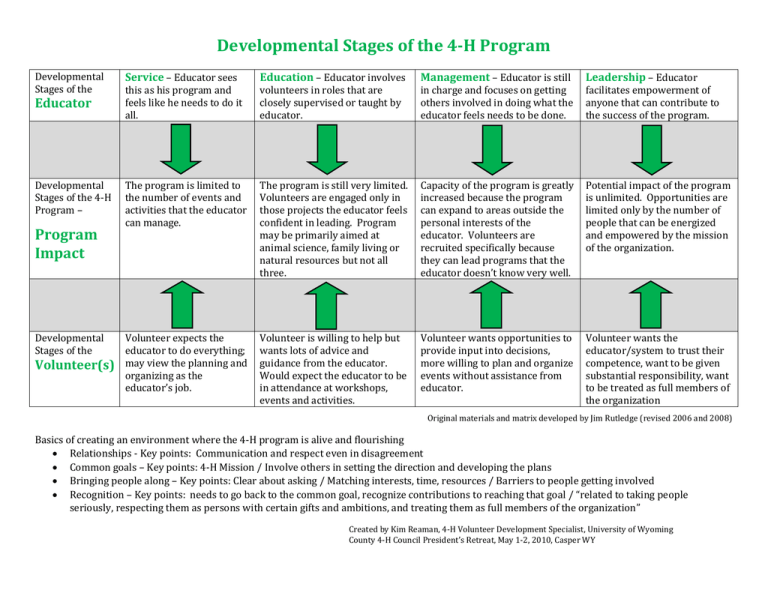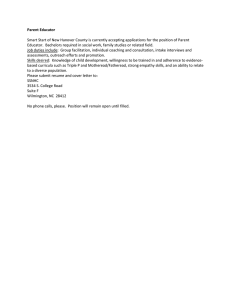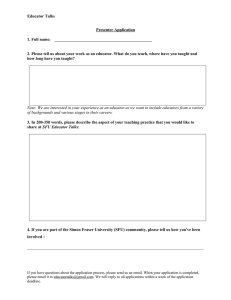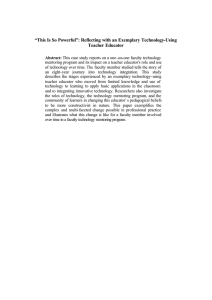Developmental Stages of the 4-H Program
advertisement

Developmental Stages of the 4-H Program Developmental Stages of the Service – Educator sees Education – Educator involves Management – Educator is still Leadership – Educator Developmental Stages of the 4-H Program – The program is limited to the number of events and activities that the educator can manage. The program is still very limited. Volunteers are engaged only in those projects the educator feels confident in leading. Program may be primarily aimed at animal science, family living or natural resources but not all three. Capacity of the program is greatly increased because the program can expand to areas outside the personal interests of the educator. Volunteers are recruited specifically because they can lead programs that the educator doesn’t know very well. Potential impact of the program is unlimited. Opportunities are limited only by the number of people that can be energized and empowered by the mission of the organization. Volunteer expects the educator to do everything; may view the planning and organizing as the educator’s job. Volunteer is willing to help but wants lots of advice and guidance from the educator. Would expect the educator to be in attendance at workshops, events and activities. Volunteer wants opportunities to provide input into decisions, more willing to plan and organize events without assistance from educator. Volunteer wants the educator/system to trust their competence, want to be given substantial responsibility, want to be treated as full members of the organization Educator Program Impact Developmental Stages of the Volunteer(s) this as his program and feels like he needs to do it all. volunteers in roles that are closely supervised or taught by educator. in charge and focuses on getting others involved in doing what the educator feels needs to be done. facilitates empowerment of anyone that can contribute to the success of the program. Original materials and matrix developed by Jim Rutledge (revised 2006 and 2008) Basics of creating an environment where the 4-H program is alive and flourishing Relationships - Key points: Communication and respect even in disagreement Common goals – Key points: 4-H Mission / Involve others in setting the direction and developing the plans Bringing people along – Key points: Clear about asking / Matching interests, time, resources / Barriers to people getting involved Recognition – Key points: needs to go back to the common goal, recognize contributions to reaching that goal / “related to taking people seriously, respecting them as persons with certain gifts and ambitions, and treating them as full members of the organization” Created by Kim Reaman, 4-H Volunteer Development Specialist, University of Wyoming County 4-H Council President’s Retreat, May 1-2, 2010, Casper WY






